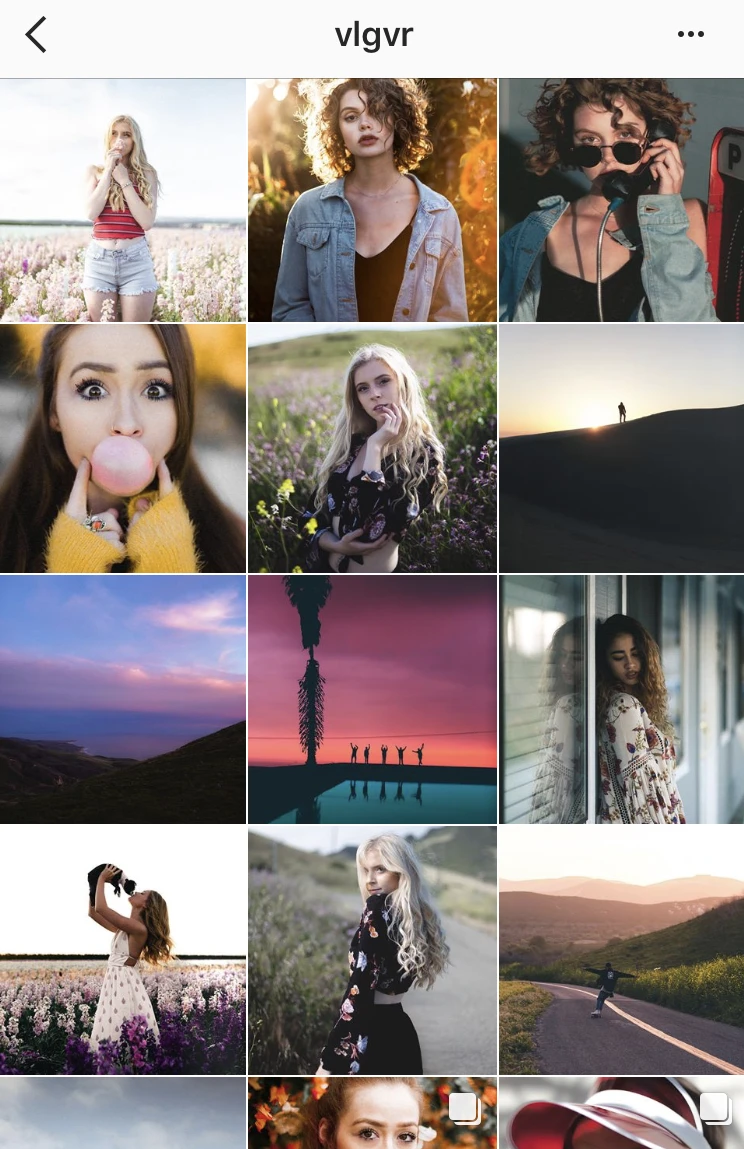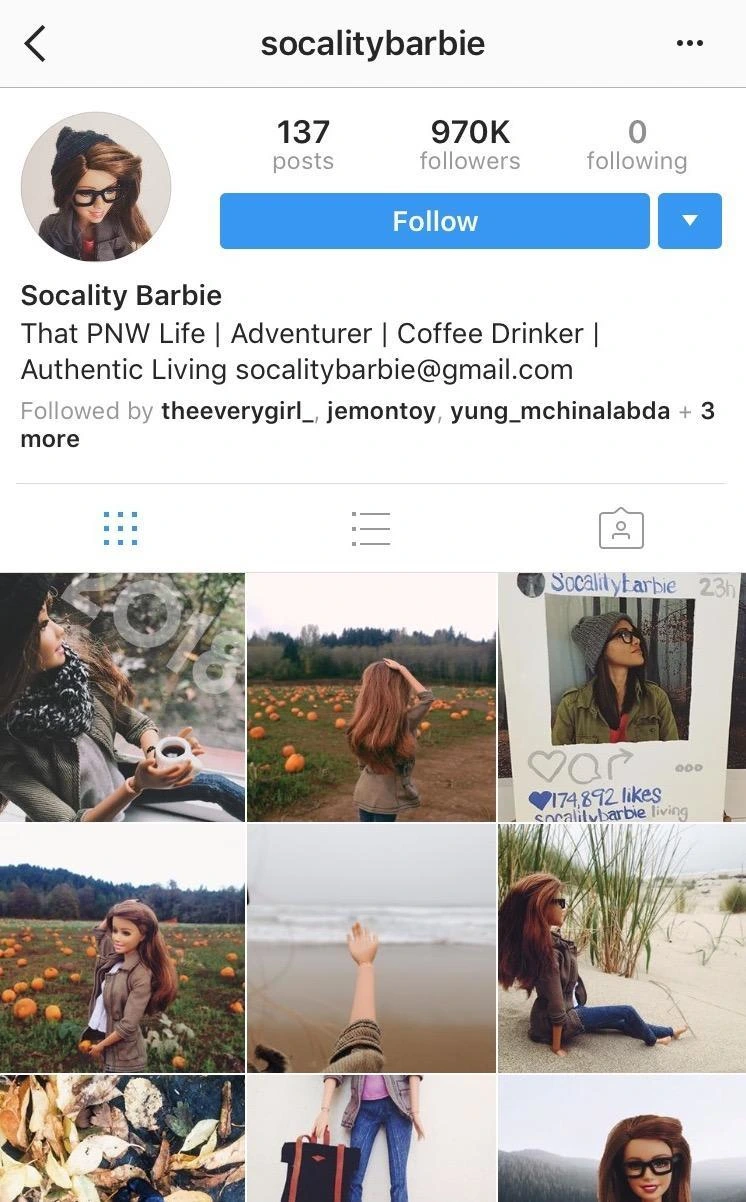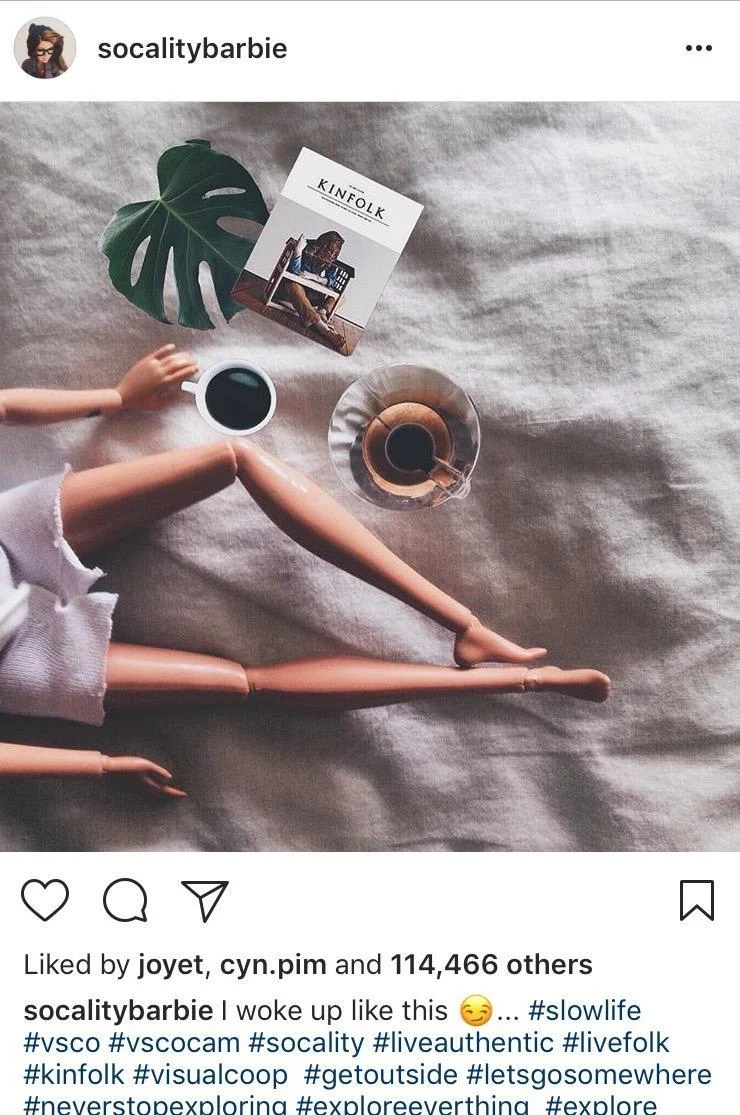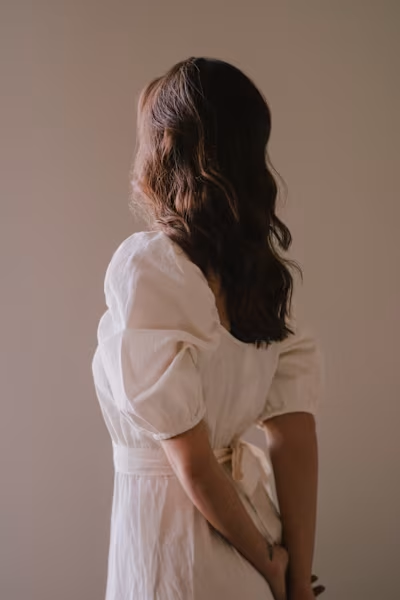Profile on Photographer Chris Drago
Christopher Drago dips a fry into his strawberry milkshake inside Hillcrest, San Diego’s Burger Lounge restaurant before turning his back towards the sun to see if we have reached “golden hour.” To most, “golden hour” is just the period of time before sunset or after sunrise. However, to many photographers such a Drago, “golden hour” is that time of the day, preferably from 5pm to 7pm, where the natural lighting emanates a soft golden tone to each subject in his viewfinder.
For Drago, “golden hour” is the best time to shoot -- the lighting does not give off dark shadows and there is little need to use any additional devices to shoot photos with. At the age of 22, Drago has picked up knowledge on and experience with photography that goes beyond his years. He is a self-taught photographer whose diligent and creative mentality has earned him large recognition in the photography community, specifically on the popular photo-sharing app: Instagram.

Outside the window, stores and passersby are radiating with soft tints of gold and yellow as the sun lazily dozes its way into the sunset. Looking on from behind the window, the view looks so dream-like it almost feels unreal.
“Shit we have to go,” Drago says as he takes in several long gulps of his strawberry milkshake before getting out of his seat to head out the door. Drago is scheduled for a graduation shoot within this hour and needs to get to Balboa Park before the sun goes down. The issue with
“golden hour” is that it actually does typically only lasts an hour and often times, that hour may not be enough time to run an entire photoshoot.
Although the drive from Hillcrest to Balboa Park is only a mere five minutes, Drago rushes through the crowded sidewalks of young adults bar-hopping to their next destination, bumping into these strangers as he makes his way to the gray Honda Civic parallel parked at the end of the street.
“We need to get there in time,” Drago says, almost out of breath as he pulls his Canon camera bag out of the trunk.
This mentality of taking advantage of a fleeting moment is partly the reason for his success on Instagram. Finding “Instagram fame” on the photo-sharing social media app in the last recent years has enabled Drago the opportunities to network and build an established brand for himself.

His photography has earned him a respectable reputation among the Instagram photography community. Under the username @vlgvr, Drago has a portfolio page boasting over six-thousand followers displaying over one-thousand photos of established models and even some fellow “Instagram famous” photographers from different areas of the country.
With the ever-growing popularity of Instagram, many photographers have turned to the app as a business tool to exhibit their work and network with brands, models, and other creatives.
Instagram has shifted from a simple photo-sharing app to a creative space that has evolved into a culture of its own. In the ever-growing world of social media, there is an increasing trend to post the “best” photos that will receive the most attention.
Tactics such as utilizing hashtags, adding the location, and posting at a certain time of the day have been standard “golden rules” to any wannabe Instagrammer that wants to gain more visibility on their account. This culture has influenced so many users that accounts such as, Socality Barbie and Celeste Barber have gained attention in their own ways for mocking the Instagram “lifestyle.”


Within this culture, there are subcultures on the beloved app that follow that frame of mind, however it is more in a way that will gain the attention of specific users. For example, among the Instagram photography community, it is recommended to tag popular accounts that will feature your photography. Feature accounts that have a huge following such as Moodygrams and Of2humans are constantly tagged by photographers on Instagram that hope that their work will be featured on these accounts.
A feature on an account that boasts over a million or even over one-hundred thousand followers will help a photographer gain more online attention. This method of building an audience is one of the easier ways to get recognized in the Instagram photography community.
It is also a method that helped Drago gain more attention on his own account.
In May, Drago received attention from various photo feature accounts after posting a portrait of New York City model @itsanau on his account.
The photo was taken during “golden hour” at Venice Beach, California. Leaned up against the warm concrete wall, creating contrast from the shadows of the palm tree above her, Ana looks away from the camera with a soft gaze looking towards the floor. The strikingly red hat she wears in the photo contrasts the soft tones accompanied with the rest of the photo.
Before taking that photo, the wind had gotten some dust on Drago’s lens, and after looking up from cleaning it, he finds Ana stretching as the wind blows around her. It was in that moment that prompted Drago to snap a shot of her.
“The model’s name is Ana. She came across my photography work two years ago. After following each other for only a month or two, we found ourselves linking up at Venice Beach with some of my friends who were aspiring photographers at the time,” Drago says.
On the day that they met up to shoot, Ana was in town for vacation and was only free that day before she had to head back to NYC.
“We managed to get great photos despite the fact that we were rushed with time,” Drago says.
It became apparent that the online community agreed.
After posting that photo of Ana in May, his photo was featured on the popular portrait account @theportraitpr0ject, which has a heaping following of over two-hundred and forty thousand followers.
“After a few more features of the same photo on multiple feature accounts, I had gotten asked to join the feature page’s family,” Drago says.
Joining a feature page’s family account allows a photographer certain privileges to the feature account. If a photographer is part of a feature family, they have the privilege of choosing the next photo to feature on the account.
Although Drago already had a recognizable following before his shoot with Ana, being featured on those accounts gave him more exposure, especially with users outside of the online photography community. While a majority of feature account followers are photographers hoping to get their names out, other users follow those accounts simply for the enjoyment of viewing those photos.
Many photographers on Instagram aspire to have the same opportunities that have been presented to Drago.
Aaron Nomad, an aspiring photographer in Florida who also goes by the username @whoaaronn, believes that, “Instagram like many social media platforms are over saturated with content, which can be a good and bad thing. With so much content being produced every day, it’s hard to break out.” With a following a little shy of three-thousand, Nomad’s account is centered on portrait photography, similar to Drago. However, his photos rely more on softer pastel tones, as opposed to the grainy and dark style Drago is known for.
“I feel like I’ve always liked photos. I was always attracted to the idea of capturing a moment and giving the others to experience that moment through a photo. I know it sounds cliché, but there’s so much to a photo that people can take away from,” Drago says.
It is this idea of capturing a certain mood or experience that entices Drago’s passion for the art. Among his collection of over a thousand photos posted on his account, a majority of those photos resemble a “dark” or even ominous mood. His style is centered on toning the highlights down, emphasizing much grain, and utilizing sharp contrasts to create a “moody” experience in the photo.
Drago credits that much of his editing style with photography is inspired by vintage family photos that were decorated in his childhood home growing up. Those photos were also the reason where his passion for photography began as a child.
“I feel like I’ve always liked photos. I was always attracted to the idea of capturing a moment and giving the others to experience that moment through a photo. I know it sounds cliché, but there’s so much to a photo that people can take away from,” Drago says.
Growing up as an only child, his parents had a tendency to take many photos of him. Although he did not always like being in front of the camera, he appreciated the sentimental value each photo had.
“My dad had this old school Polaroid that he liked to carry around whenever we went on family trips. I always liked how vintage the photos looked and there was just something really special about being able to hold them in my hand and feel the photo in my hand,” Drago says.
His main goal with his editing style is to mimic an urban or vintage vibe to his photos, similar to the Polaroid photos he enjoyed looking at as a child. He shares that he spends most of his time focusing on color correction and grain more than anything else. These two editing tools help to imitate that vintage vibe.
Although his Instagram boasts over 6 thousand followers, Drago believes his photography is different compared to other Instagram accounts of other typical photographers found on Instagram.
He wants to avoid the superficiality that Instagram culture has notoriously displayed in a majority of photography accounts.
If placed in a world where Instagram did not exist, Drago believes that he would still be doing photography.
“Would I spend hours sacrificing sleep and food just to stare at a screen all night just to put out work that maybe only a handful of people would see? Definitely. I’m happy to even just share and express my creativity. If Instagram wasn’t a tool to help me make money through photography, I’d probably never post photos online,” Drago says.
While many of his photos have a warmer tone to it, they also capture this gloomy or moody feel to it. Although many of his photos on his Instagram are portraits, he makes sure that the photos he captures are mainly candid.
“I’m different from a lot of Instagram photographers because my work isn’t based on looking posed or pretty,” Drago says.
After living in the small town of Lompoc, California for a majority of his adolescence, Drago has learned to appreciate the simple things in life. Although he does not have enough money to travel and go to breathtaking places such as Paris or Milan like these other Instagram photographers, Drago has found beauty in moments that he can capture from everyday life, even in the small town of Lompoc.
While his portfolio does showcase professional models, he believes his best photos are ones with his friends where they are just having fun and hanging out.

In a photo taken of Instagram famous model Presley Rhodes (@presssme), Drago recalls the nights he spent staying in Venice beach.
“Every day was filled with enjoying our morning coffees as we walk out onto the beach less than a quarter mile from their apartment. This exact photo was taken on the first night right before sunset when the light was cool with the hazy colors in the sky,” Drago says.
Drago believes that his most candid and natural photos have received the most traction. Capturing the most natural essence of the moment is what Drago believes to be the most vital and precious to him personally.
“Whenever I look at this photo, I think back to one of the best visits down to Venice I have ever had. It reminds me of the freedom I had while I was down there,” Drago says.
This sense of freedom and candidacy is what he strives to display in his photos.
“I try to avoid giving my models any direction. I always come in with a vision and my biggest goal for each vision is really to create the sense that viewer feels like they were there hanging out with us,” Drago says.
On his Instagram, there are rarely any photos of his subjects smiling or posed with a typical “Instagram pose.” Additionally, many of his photos are of his subjects doing mundane things such as reading a newspaper or smoking a cigarette.
Something in the way that he has captured these subjects doing simple everyday tasks and even in a simple environment has still brought attention to Drago. The 300 to 1,000 people liking each of photos can agree.
Drago believes his art and passion with photography is one of the things that helps him cope with his depression.
“Ever since this whole moving thing started, I haven’t had much time to shoot and it honestly has been affecting me,” Drago says.
After living with his parents in Lompoc for over 4 years, Drago received news that he needed to find a place of his own last month. With the recent death of his childhood pug, Ginger, and the news to move out, photography has become the only escape from reality for Drago lately. Through his low moments and recent change of events in his life, photography has always remained the constant in his life. However, there are still times where photography or any creative work in general cannot motivate him to keep moving forward or keep a positive mentality.
There are days where all he wants to do is go out and shoot, and other days where he cannot get out of bed. Although he has a large circle of friends that support him, Drago prefers to spend a lot of time alone when he feels he is stuck in a rut.
“I’ll get notifications from my friends asking what I’m up to or to kick it, and I just don’t have the motivation. I’ll ignore my phone or turn my notifications off. I just don’t want to be near my phone when I’m going through shit. And it isn’t personal, but some days I literally and physically just can’t,” Drago says.
The move has not only affected his mental health, but it has also affected him physically. After working for 8 hours on some days and going on shoots after a work day or on weekends, the stress has taken a toll on his health and general wellbeing.
“It’s taken me so long to pack all my shit because honestly I’m spending all my time working and stressing over saving up enough money to afford rent and food. I can’t sleep because I feel like I should be working. I can’t eat because I think I should be sleeping. It’s a perpetual loop of hell,” Drago says.
With only a couple hundred dollars saved from his dishwashing job and from photoshoots, Drago worries he will not have enough money to pay for rent and food once he moves out.
“Our parents introduced us to each other when I first moved in. We clicked right away,” Drago says.
Growing up, Drago always had trouble fitting in. Being the “adopted child” in his family, he struggled with coming to terms with this idea that he could belong somewhere. Born in the Philippines 21 years ago, Drago does not remember much of his life before moving to San Diego, but from what he can recall, he remembers that it was filled with a lot of tension.
Although he is not exactly sure who his birth parents are, he knows that his mother was a housekeeper that worked for an important business man. There were a lot of issues surrounding his birth mother’s pregnancy and it was something that had to be kept a secret. Due to financial and personal reasons, she could not keep Drago, so she decided to place him in a dumpster.
Drago did not know this information until he was sixteen.
It started with an argument during a family party. Drago’s adoptive mother was upset with his aunt. A few unkind words were exchanged and somewhere in the middle of the argument, the information that Drago was adopted spills.
“I don’t know when they were planning on telling me, but that’s the last way I wanted to find out,” Drago says.
Kim, who was there at the party and witnessed the whole argument was also at a loss for words.
Although Drago has forgiven his parents since then, his relationship with them did not stay the same since then. Drago thinks that the move to Lompoc had only just made it sour. As a teenager, especially at the age of 16, it was typical for Drago to have a distant or detached relationship with his parents, but Drago believes that even at 21 and with some years after that incident, little of their relationship has improved.
“After finding out I was adopted, so much new information came out that it was too overwhelming. I didn’t know what to do with it, and it’s not like I could change any of it. I fell into this depression and I deadass thought my life was one big lie. How the fuck can you keep something like that from your kid?” Drago says.
In that same week, Drago learned about his birth parents, learned that he was found in a dumpster, and learned that his adoptive parents were not able to make a child together – which is why they chose to adopt Drago when he was an infant.
His adoptive Filipino mother and white father heard about his situation through a family friend and were eager to go to the Philippines to meet and adopt him. They took him in with the intention to care for him and create a better life for him.
Although this was an issue from his adolescence, his adoptive status still had an impact on his adult life. For some time after turning 18, it was difficult for Drago to find a job anywhere because he did not have any form of government-issued identification. Complications in his adoptive status made it difficult to become financially independent and to even drive a car.
Through the help of a friend, he was able to work at a restaurant located in Santa Barbara, California named Cajun Kitchen Café last year for some time without any form of identification but had to be let go when tax season hit. It was not until this year that Drago finally had his legal document in order and was welcomed back from the restaurant.
Drago has also applied this mentality to his creative life.
Ever since doing photography professionally at the age of 18, Drago has accepted the fact that it is not always going to be a stable career to pursue, especially when it comes to freelance work. However, his attention on Instagram has helped him gain more opportunities to display his work on a larger scale and move forward with his photography endeavors. With some clever marketing tactics and a lot of charm, Drago has landed gigs for many senior photoshoots, prom shoots, homecoming shoot, engagement shoots, product shoots, couples shoots, and wedding photography.
In addition to that, he has earned attention in that photography community and become close with @brightong, a well-known Santa Barbara photographer with a heaping following of over 126-thousand followers.
Drago’s relationships with businesses has also been well-earned. Companies such as @danielwellingon and @rvrnboutique have reached out to Drago and asked him to take and advertise photos of their products. In addition to getting more attention through these companies, he is also able to keep all of the products they send him to take photos of.
While Drago cannot help but to admit that Instagram was the main reason for his success, he hates the photo-sharing app.
“It makes me feel like shit, honestly. It’s a cool place to share stuff, but honestly, my very best work isn’t even on my Instagram,” Drago says.
With social media’s increasing culture of sharing or even oversharing online, the competition to post the most interesting and best photos in the Instagram photography community has become tougher. There are even many online blogs and Instagram accounts that offer methods and techniques to help your photos gain the most attention. One of the vital techniques to gaining Instagram fame and exposure is putting out content constantly -- at least more than twice a day. In addition to that, these posts need to be posted at a certain time or else they do not gain as much attention as they could.
A creative Instagram account that lacks content and is not as “active” as other Instagram accounts gets thrown to the back of the Instagram algorithm and may cause its users to lose followers. Although Drago is thankful for the attention he receives and the compliments he gets, social media has caused him to experience lingering feelings of anxiety whenever he makes a new post of his work.
Part of that anxiety is due to constantly seeing all the work being pushed out by a vast amount of talented and creative photographers.
“The reason I don’t put my best work out there is because I see other people’s work and it makes me so critical of myself and my work. I don’t like the idea of feeling like I ‘made it’ because of Instagram,” Drago says.
Like this project
Posted Nov 2, 2023
Journalism profile piece on Southern California photographer Chris Drago.
Likes
0
Views
19
Tags



